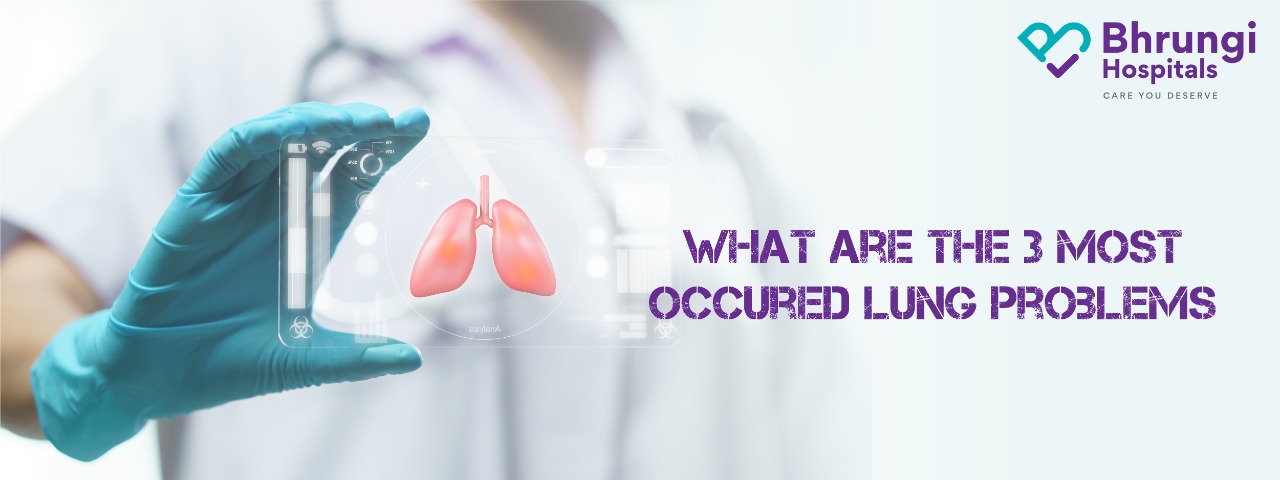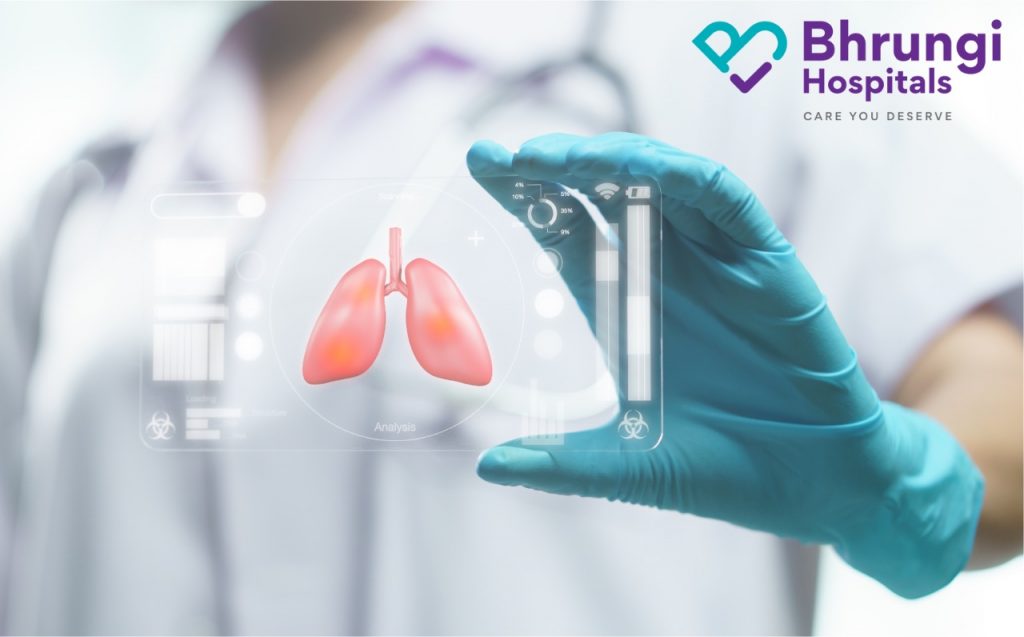
During a day, a person will typically take nearly 25,000 breaths. A person with lung disease, on the other hand, may have difficulty breathing even 20,000 breaths. Asthma, pulmonary fibrosis, and COPD are among the three Most Common Lung Diseases people face. We will learn everything about it in the section below.
3 Most Common Lung Diseases:
1. Asthma
2. Chronic Obstructive Pulmonary Disease (COPD)
3. Pulmonary Fibrosis
1. Asthma
When a person has asthma, their airway can swell and narrow, making it difficult to breathe and feel like they aren’t getting enough oxygen. Asthma attacks frequently occur after a “trigger” such as smoke, pollution, or pet hair has been inhaled. Asthma affects at least 25 million people in India. It is a chronic illness for which there is no cure.
Symptoms of Asthma
The following are some of the signs and symptoms of asthma:
- Breathing problems.
- Tightness or pain in the chest.
- Exhaling wheezing is a ubiquitous symptom of asthma in children.
- Shortness of breath, coughing, or wheezing can make it difficult to sleep.
- Coughing or wheezing attacks exacerbated by a respiratory virus, such as the common cold or the flu
Causes of Asthma
It’s unclear why some people develop asthma while others do not, but it’s most likely due to a combination of inherited (genetic) and environmental factors, including:
- Airborne allergens: Pollen, dust mites, mould spores, pet dander, and cockroach waste particles.
- Physical activity
- Cold Air
- Smoke and other air pollutants and irritants
- Beta-blockers, aspirin, and nonsteroidal anti-inflammatory drugs like ibuprofen (Advil, Motrin IB, and others) as well as naproxen sodium (Aleve)
Treatments
We can’t cure asthma, but we can manage it. Since everyone’s asthma is different, you and your doctor must develop a customized asthma treatment plan for you. Doctors recommend these three different types of asthma medications and treatments:
Quick-relief medicines: These medications work quickly to alleviate sudden symptoms. You take them as needed and as soon as symptoms appear.
Controller Medicine: Controller medicines help control asthma by correcting underlying changes in the airways, such as swelling and excess mucus. A combination of quick-relief and controller medicines is used for both relief and control in the short term.
Biologics: This type of treatment prevents swelling in the airways by targeting a cell or protein.
The Cost Of The Treatment
The average annual direct cost of treating asthma is ₹18,737 per year. Controlled and uncontrolled asthma patients had yearly costs of ₹13,010 and ₹23,918. Medication, doctor’s visits, investigations, and hospitalization cost an average of ₹7,427, ₹2089, 1103/year, and ₹62,500 per year, respectively.
2. Chronic Obstructive Pulmonary Disease (COPD)
It is a long-term inflammatory lung disease that causes airflow obstruction in the lungs. COPD causes the airways to thicken and become damaged. As a result of the damage, the lungs produce more mucus than usual, clogging the airways. COPD affects approximately 2% of the total population – 4.5 percent of all people over 40. The number of people diagnosed with COPD has increased by 27% in the last decade, from under 1,600 to nearly 2,000 per 100,000.
Symptoms of COPD
The following symptoms characterize COPD:
- shortness of breath
- tight chest
- coughing up lots of mucus
- wheezing
Causes of COPD
COPD is most commonly caused by:
Smoking: It is by far the most common reason people get COPD. It can also be acquired through tobacco products such as cigars and pipe smoke.
Your genes: People with COPD may have a defect in their DNA, the code that instructs the body to function correctly.
Asthma: If you don’t treat your asthma, it can lead to COPD over time.
Treatment
Primary Treatment Options For COPD Include:
- Short-Acting Bronchodilators
- Long-Acting Bronchodilators
- Steroids
- Phosphodiesterase-4 (PDE-4) Inhibitor
- Theophylline
- Antibiotics
- Pulmonary Rehabilitation
- Oxygen Therapy
Cost of the treatment
According to various studies, COPD treatment costs range from ₹9,123.37 to ₹25,847.06.
3. Pulmonary Fibrosis
Pulmonary fibrosis is a lung disease caused by scarring and damage to lung tissue. The scarring of the lungs caused by pulmonary fibrosis makes it difficult for the body to absorb enough oxygen into the bloodstream. It’s more difficult for your lungs to work correctly because of this thickened, stiff tissue. As your pulmonary fibrosis progresses, you will become increasingly short of breath. The global prevalence of pulmonary fibrosis is estimated to be 14 to 20 per 100,000 people. Approximately 100,000 people are affected in India, with 30,000 to 40,000 new cases diagnosed each year.
Symptoms of Pulmonary Fibrosis
The following are the most common pulmonary fibrosis symptoms:
- shallow and fast breathing
- tiredness
- a dry cough
- aching joints and muscles
Causes of Pulmonary Fibrosis
Pulmonary fibrosis can be caused by a variety of factors, including smoking. Frequently, the cause is unknown, for example, in the case of idiopathic pulmonary fibrosis. Pneumonia Pulmonary Fibrosis can run in families in some cases.
Treatment
Pulmonary fibrosis causes lung scarring that cannot be reversed, and no current treatment has proven effective in slowing the disease’s progression. Some medicines may temporarily improve symptoms or slow the progression of the disease. Others may be able to assist in enhancing one’s quality of life. Doctors will assess the severity of your condition to determine the best treatment option for you.
They might suggest:
- Oxygen therapy
- Pulmonary rehabilitation
- Lung transplant
Cost of the treatment
In India, the cost of pulmonary fibrosis treatment can range from 2 lakhs to 25 lakhs, but this varies. The cost of treatment of pulmonary fibrosis is determined by several factors, including whether or not the patient requires a lung transplant and whether or not surgery is required.
Summary:
Don’t ignore the signs. Even if you are feeling very well, regular check-ups can help you avoid diseases. This is especially true for lung diseases like asthma, COPD, and pulmonary fibrosis, which can go undetected until severe. If you require any assistance, Contact Bhrungi Hospital.
Learn more about a Pulmonologist, various procedures and treatments a pulmonologist can provide.








